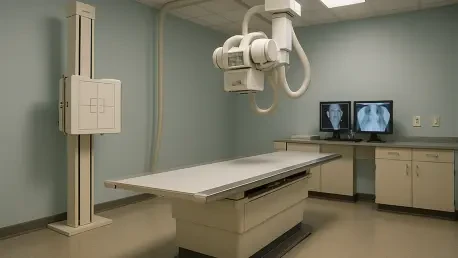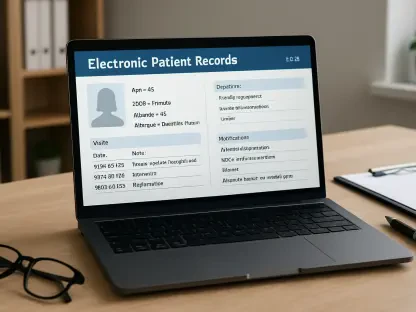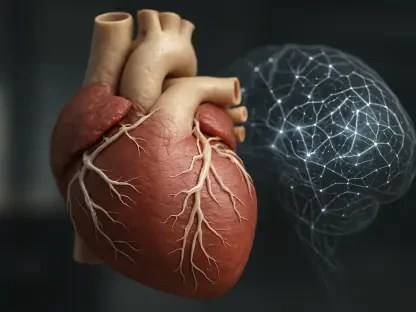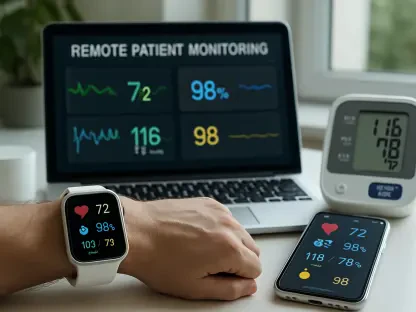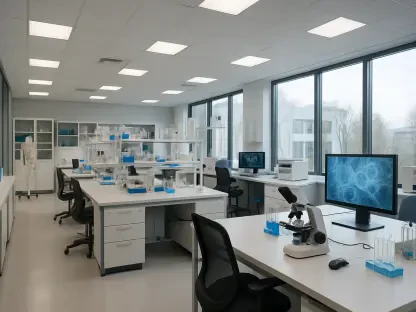As the Royal Australian and New Zealand College of Radiology (RANZCR) prepares for its 75th Annual Scientific Meeting, scheduled for October 23-25 in Naarm/Melbourne, Australia, the global radiology community stands at a pivotal moment, marking 90 years of groundbreaking contributions to medical imaging. This year, RANZCR has themed the conference around “defining tomorrow,” a fitting call to action for a field often overlooked despite its critical role in healthcare. The event promises to be a landmark gathering, bringing together experts in clinical radiology, radiation oncology, and interventional radiology to confront both longstanding challenges and emerging opportunities. With a record number of sessions and international speakers, the conference will serve as a platform to address systemic inequities, harness transformative technologies, and elevate the profession’s visibility. Far from just a technical symposium, this meeting is poised to reshape how radiology is perceived—not merely as a diagnostic tool, but as an integral part of patient care. Discussions will span from the integration of artificial intelligence to the urgent need for cultural safety and workforce resilience, setting a bold agenda for the future of the discipline.
Redefining Radiology’s Place in Modern Medicine
Radiology has long lingered in the shadows of healthcare, often undervalued despite its pervasive influence on patient outcomes. At the RANZCR conference, a central theme will be elevating this critical field to its rightful place among clinical specialties. Conference convenor Dr. Rose Thomas has pointed out that nearly every hospital patient engages with radiology at some stage, whether through diagnostic imaging or therapeutic interventions. Yet, the profession struggles with outdated perceptions that cast radiologists as mere interpreters of scans rather than active contributors to care plans. This event aims to dismantle such misconceptions by showcasing radiology’s indispensable contributions to medical decision-making, advocating for stronger integration into multidisciplinary teams. Highlighting real-world impacts, sessions will demonstrate how imaging drives everything from early disease detection to complex surgical planning, reinforcing the need for broader recognition.
The push for visibility extends beyond hospital walls, targeting public and professional awareness alike. Radiologists are often seen as working in isolation, a notion rooted in historical practices of operating from secluded basement spaces. Changing this narrative requires education and advocacy, themes that will dominate discussions at the conference. By fostering dialogue with other healthcare providers and policymakers, the event seeks to position radiologists as essential partners in patient journeys. This shift is not merely symbolic; it has tangible implications for funding, resource allocation, and policy development. As the field strives to step into the light, the conference will serve as a catalyst for redefining how radiology is understood and valued across the healthcare spectrum, ensuring its voice is heard in shaping future systems.
Navigating the AI Revolution in Radiological Practice
Artificial intelligence (AI) stands as one of the most transformative forces in radiology today, promising to enhance diagnostic precision and streamline operational workflows. At the RANZCR conference, dedicated sessions led by the AI Committee will delve into how these technologies are reshaping clinical practice. From automated image analysis to predictive modeling, AI offers tools that could significantly reduce diagnostic errors and improve patient outcomes. However, integrating such advancements comes with a host of considerations, including ensuring patient consent for data use and preparing the workforce for a tech-driven landscape. These discussions will explore how AI can complement rather than replace human expertise, aiming to strike a balance that maximizes benefits while addressing potential pitfalls in implementation.
Equally critical are the ethical and environmental challenges posed by AI, topics that will feature prominently in the conference agenda. The substantial energy consumption associated with AI systems raises concerns about sustainability, particularly as healthcare sectors worldwide grapple with reducing their carbon footprint. Additionally, there are fears of professional displacement and burnout, as radiologists navigate the psychological impact of rapid technological change. A keynote Nisbet Oration by futurist Anders Sörman-Nilsson will aim to counterbalance these apprehensions with a vision of optimism, encouraging the field to embrace innovation responsibly. By fostering a nuanced dialogue, the conference seeks to guide radiologists in adopting AI as a partner in care, ensuring that technology serves to enhance, not undermine, the human element of medicine.
Confronting Workforce Challenges and Cultural Inclusion
Workforce issues remain a pressing concern for radiology, particularly the stark maldistribution of professionals across geographic regions. In Australia, only 11% of RANZCR’s clinical radiologists practice in rural and remote areas, creating significant barriers to accessing time-critical treatments such as ischemic stroke care. The conference will host sessions focused on innovative solutions to this disparity, including the potential of mobile imaging units and tele-radiology to bridge gaps in service delivery. Beyond logistics, the discussions will address the root causes of shortages, exploring strategies to attract and retain talent in underserved regions. This focus on accessibility underscores a broader commitment to ensuring that advancements in radiology reach all corners of society, not just urban centers.
Another vital aspect of workforce development is fostering diversity and cultural safety, themes that will be championed by the Māori, Aboriginal, and Torres Strait Islander Empowerment Committee (MATEC) during the event. Sessions will emphasize the importance of truth-telling in health equity, advocating for practices that respect cultural nuances and address systemic biases. Building a resilient and inclusive workforce is not just about numbers; it’s about equipping radiologists with the skills to deliver care that is sensitive to diverse patient needs. Burnout, a pervasive issue in high-pressure medical fields, will also be tackled, with workshops on leadership and mental health support. By prioritizing these human-centered concerns, the conference aims to create a sustainable future for radiology that values both professional well-being and cultural competence.
Prioritizing Women’s Health and Social Responsibility
Advancements in women’s health imaging will take a prominent spot at the RANZCR conference, addressing conditions that have historically been under-researched and under-treated. Workshops led by international experts, such as Dr. Anugayathri Jawahar, will focus on pelvic floor magnetic resonance imaging as a less invasive alternative to traditional methods, highlighting its potential to transform care in Australia where it remains underutilized. Similarly, presentations by local specialists like Dr. Clair Shadbolt will explore imaging techniques for endometriosis, aiming to align domestic practices with global standards. These sessions are designed not only to educate practitioners but also to raise awareness among healthcare systems about the need for specialized services that prioritize women’s unique health challenges, pushing for broader systemic change.
Radiology’s role in uncovering hidden social issues adds another layer of significance to the conference discussions. Experts like Dr. Bharti Khurana from Harvard Medical School will present research on automated tools that help identify patterns of intimate partner violence and child abuse in imaging scans. This capability urges radiologists to look beyond the technical aspects of their work and consider the human stories behind the images. By fostering greater awareness and training in pattern recognition, the event seeks to empower professionals to play a proactive role in safeguarding vulnerable populations. This intersection of technology and social responsibility highlights radiology’s potential to contribute to broader societal well-being, extending its impact far beyond clinical diagnostics.
Bridging Gaps in Access and Sustainability
Equity in access to radiological services remains a critical challenge, particularly for rural communities in Australia and populations in lower-income countries across the Asia-Pacific region. The RANZCR conference will feature sessions on rural radiology innovations, such as mobile stroke units and robotics, alongside examinations of global disparities. For instance, while countries like Singapore boast cutting-edge imaging facilities, others like Fiji lack even basic MRI machines, severely limiting diagnostic capabilities. Proposed solutions, such as bulk equipment purchases to make radiation therapy more affordable, will be debated as ways to address these imbalances. The urgency of ensuring that life-saving technologies reach underserved areas will be a recurring theme, driving calls for international collaboration and policy reform.
Sustainability concerns will also be under the spotlight, as radiology grapples with its environmental footprint. Medical imaging is a significant consumer of hospital energy, and the integration of AI only amplifies these demands. Conference discussions will explore strategies to mitigate this impact, from adopting energy-efficient technologies to rethinking workflow practices. This focus reflects a growing recognition within the field of its responsibility to align with broader ecological goals in healthcare. By addressing both equity and environmental challenges, the event aims to chart a path forward that ensures radiology not only advances technologically but also contributes to a more just and sustainable global health landscape, balancing innovation with ethical imperatives.
Shaping Tomorrow Through Global and Local Insights
Reflecting on the impactful discussions held at the RANZCR conference, it becomes evident that radiology stands at a transformative crossroads, celebrating milestones while confronting persistent barriers. The event successfully brought together diverse voices to address the profession’s historical marginalization. Sessions illuminated the profound potential of AI to redefine diagnostics, tempered by thoughtful debates on its ethical and environmental ramifications. Workforce shortages and cultural safety emerged as urgent priorities, with actionable frameworks proposed to support rural access and inclusive care.
Looking ahead, the insights gained from this gathering must translate into concrete steps. Stakeholders are encouraged to advocate for policies that elevate radiology’s clinical status, ensuring resources match its critical role. Investment in scalable solutions, like mobile units for remote areas and sustainable tech practices, should be prioritized to address equity and ecological concerns. Furthermore, ongoing education on specialized imaging for women’s health and social issues can empower radiologists to drive societal change. As the field builds on the momentum of this landmark meeting, collaboration between global and local entities will be key to implementing these strategies, ensuring radiology not only defines tomorrow but also delivers on its promise of better, more equitable healthcare for all.
